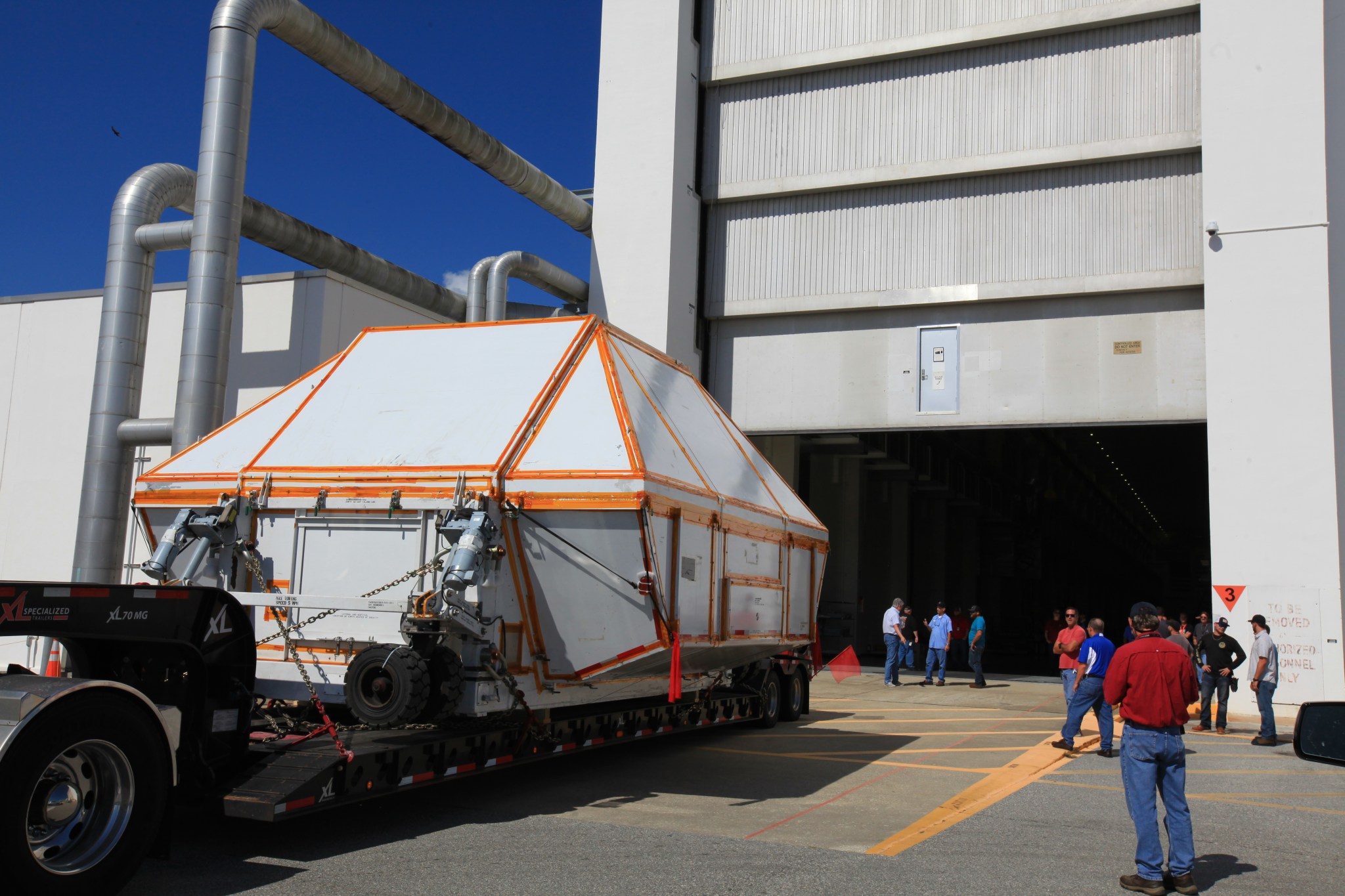By Linda Herridge
NASA’s John F. Kennedy Space Center
It’s almost a packed house in the Neil Armstrong Operations and Checkout building high bay at NASA’s Kennedy Space Center in Florida, with the arrival of the Orion pressure vessel for Exploration Mission-2 (EM-2) that will carry astronauts beyond the Moon atop the Space Launch System (SLS) rocket. The pressure vessel arrived on a super-wide transport truck at the center Aug. 24 and joined the Orion Exploration Mission-1 crew module in the high bay where technicians recently secured the heat shield to the bottom of the spacecraft.
The pressure vessel is Orion’s primary structure that holds the pressurized atmosphere astronauts will breathe and work in while in the vacuum of deep space. The main structure of the pressure vessel consists of seven large aluminum pieces that are welded together to produce a strong, yet light-weight, air-tight capsule. The pieces were joined at the Michoud Assembly Facility near New Orleans using a state-of-the-art process called friction-stir welding, which produces incredibly strong bonds by transforming metals from a solid into a plastic-like state, and then using a rotating pin tool to soften, stir and forge a bond between two metal components to form a uniform welded joint, a vital requirement of next-generation space hardware.
The pressure vessel was loaded into the Crew Module Transportation Fixture and then lowered onto a heavy equipment semi-trailer for the nearly 700-mile journey over land to Kennedy. Efforts will now begin to prepare the pressure vessel for flight. Initially, the crew module will be secured into a precision alignment tool and Lockheed Martin technicians will begin the work to attach the main structural components to the exterior of the module. These critical parts, some made of aluminum and titanium, will provide structural strength to the pressure vessel and give the spacecraft its conical shape.
“Flying Orion on our new SLS rocket represents the beginning of a new era in space exploration,” said Kent Beringer, EM-2 lead with Orion Production Operations at Kennedy. “This Orion spacecraft and the SLS will take humans farther into the solar system than ever before. It doesn’t get any better than this.”



























